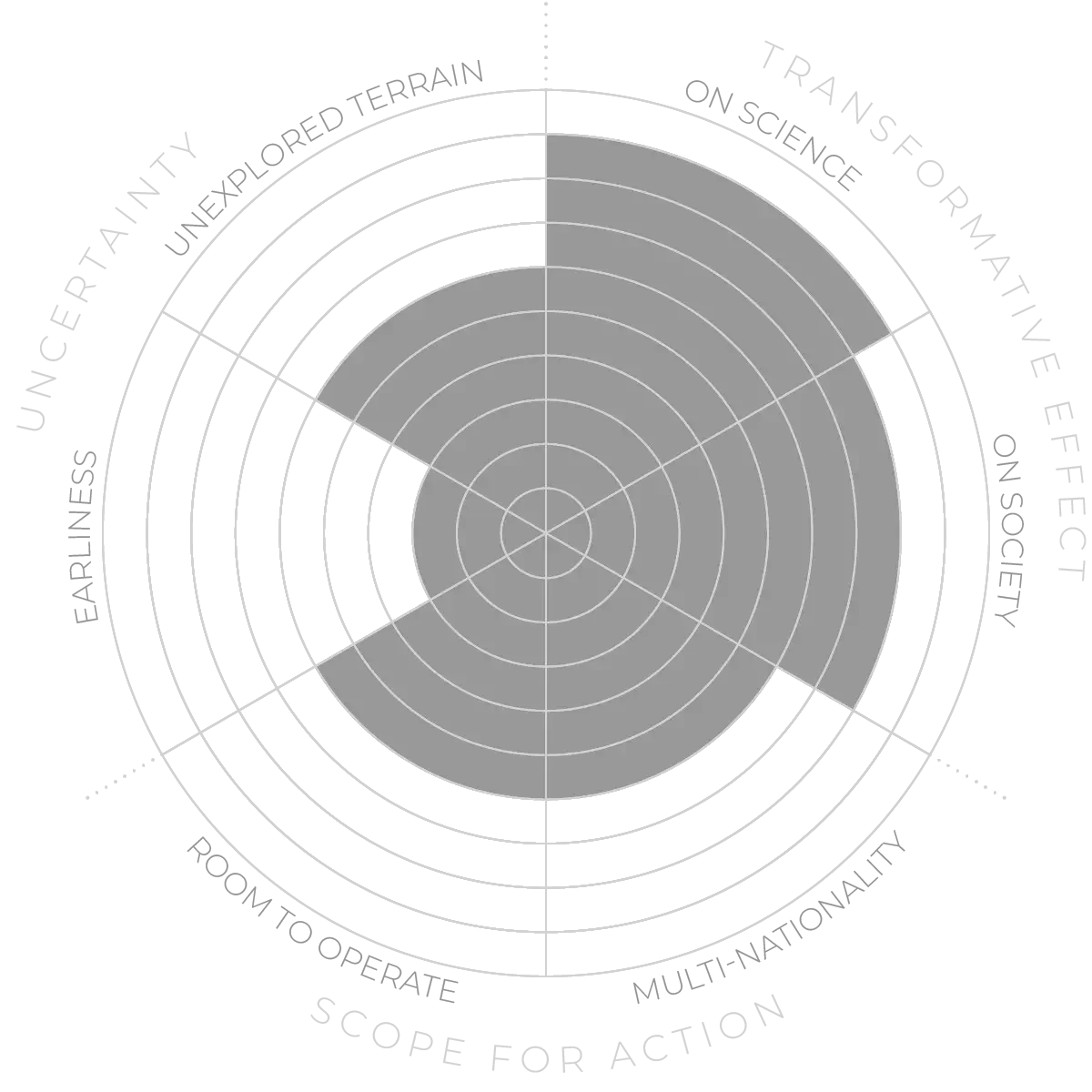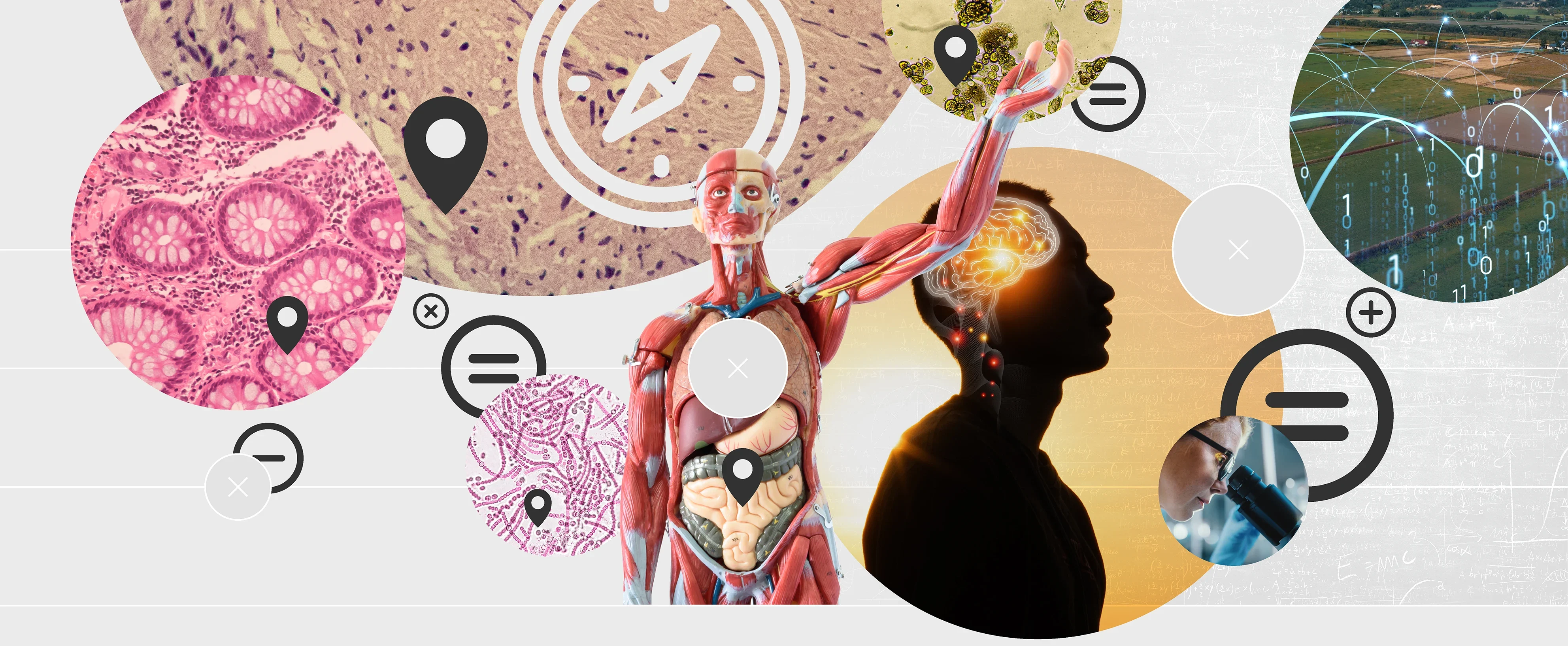Future Horizons:
10-yearhorizon
Neuroscience benefits from theory-formation
25-yearhorizon
Mapping initiatives facilitate clinical research
One example is the Human Cell Atlas,18 which aims to make a cellular and molecular-level resolution three-dimensional map of the human body. This involves the integration of vast amounts of data, inclusion of annotation at relevant resolutions and incorporating the facility to interrogate the underlying data. The mid-term aim is to build a foundation model of the human body at cellular and molecular resolution.19
In neuroscience, there is a lack of mathematical models to describe high-dimensional, non-linear complex systems.20 If the mathematical tools for describing the dynamics of such systems were to be developed, there would probably be applications in many other areas, such as economics.
For these projects and others, which promise a revolution in the ability to understand and engineer the mechanisms of life, lack of data is not always the main problem, though data for a comprehensive Human Cell Atlas would be transformational for biology and medicine. Instead, there is a need to formalise the mathematical requirements of biology21 so that mathematicians can efficiently and effectively work with biologists to make progress — there are progress opportunities here for both fields. There is also a need to understand how deep or complex the models of various systems need to be in order for progress to be made — not all biological systems require the same level of granularity for useful analysis.22
Life - Anticipation Scores



